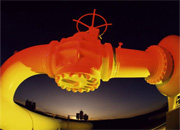The LNG plant, which accounts for about 3 percent of global production, lies roughly 600 kilometers (370 miles) from the epicenter of the earthquake and exported about 7.8 million tons of the fuel last year to buyers in Japan, China and Taiwan, according to data compiled by Bloomberg. There have been dozens of aftershocks since the 7.5 magnitude shock struck early Monday.
«Given the location and magnitude of the earthquake, as well as the scale of the aftershocks, we anticipate at least a month’s downtime is likely» and six weeks is possible, UBS analyst Nik Burns wrote in a Feb. 28 note.
Burns cut his 2018 earnings per share estimate for Oil Search Ltd., which has a 29 percent stake in the venture, by 15 percent.
Exxon is working with customers to minimize the impact on their businesses and it’s «inappropriate for anyone to speculate on timeframes at this stage," it said in a statement.
The company said Wednesday that it’s undertaking a full visual inspection of the pipeline right of way that runs about 700 kilometers from the upstream gas fields to the Port Moresby export terminal and has no indication the line has sustained damage. Administrative buildings and living quarters were damaged near its Hides Gas Conditioning Plant, as were roads and other infrastructure, according to Exxon.
The earthquake also wrecked a runway at the Komo airport near the upstream gas facilities, potentially hampering efforts to restore production. About three-fourths of the airstrip has been destroyed and Exxon is flying in specialists by helicopter to survey damage, Frank Kretschmer, the company’s senior vice president for Asia-Pacific LNG Marketing, said Wednesday.
Oil Search lost as much as 5.2 percent, the biggest intraday decline since Nov. 2016, before paring its loss to 4.4 percent as of 2:57 p.m. Sydney time Thursday. Santos Ltd., which holds a 13.5 percent stake in the PNG LNG project, lost as much as 2 percent.
07 Января 2026 | среда | 09:54


